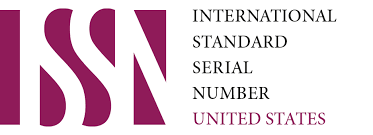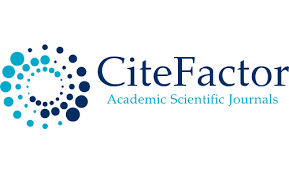Enhancing logical thinking using “Alpomish” epic in comprehensive schools
Keywords:
epic, logical thinking, imaginative thinking, creative thinkingAbstract
Logical thinking has been seen as a skill that had to be improved in every educational context. Therefore, enhancing this ability has become a principal issue for many educators and researchers. A great deal of research has been carried out to reveal what fosters this ability and how it is fostered. In this article, the relationship between logical thinking and epic in the example of “Alpomish” epic is investigated. Hence the purpose of this article is to review the effects of epic on the learners’ logical thinking abilities. In addition, the implementation of epic in teaching process of comrehensive schools to enhance the logical thinking of learners is analyzed. Several activities that can be used in comprehensive schools to enhance the logical thinking of learners are proposed.
References
Alpomish (O`zbek xalq qahramonlik dostoni). – Toshkent: Sharq NMAK Bosh tahririyati, 2010-yil.
Lottie Baker “Using Story Retelling Wheels with Young Learners” Forum, Volume 59, Number 3, 2021. Pp 14-24.
Mixailova, L. I. folk art culture: determinants, trends, patterns of sociodynamics. - M.: University book, 2006. - 264 p.
Muhammedova Feruza. Darslarda zamonaviy metodlardan foylanish. Til va adabiyot ta‘limi jurnali. // 2013, 12-son.
Neil Selwyn. Education and Technology: Key Issues and Debates. – Continuum. New York, 2011.
Niyazmetova T. Adabiy ta`lim muammolari. - Т.: Alisher Navoiy nomidagi O`zbekiston Milliy kutubxonasi nashriyoti, 2012.
Nurmonov A., Ikromov I., Boynazarov F. Yangi pedagogik texnologiya asoslari. (Interfaol darslar) Innovatsiya jarayoni. - T.: Falsafa va huquq instituti, 2007.
Primov R.T., Norkulov F.T. The Art of Uzbek Epic. Middle European Scientific Bulliten.
Toshtemirova K.A. Using health – protecting technologies to enhance the logical thinking of learners in English. International Engineering Journal For Research & Development E-ISSN:2349-0721, Peer Reviewed & Referred Journal DOI 10.17605/OSF.IO/9BT7G. https://iejrd.com/index.php/%20/article/view/2605
Xodjiyeva F. O. Formation of critical thinking in students. - Tashkent: Fan, 2008. –140 p.
Xudoyberdiyev Erkin. Adabiyotshunoslikka kirish. - Toshkent: Sharq, 2008.
Yusupova Dilnavoz. Adabiyotdan universal qo`llanma. - Toshkent: Akademnashr, 2014.
Yo`ldoshev Q., Qodirov V., Yo`ldoshbekov J. Adabiyot: Umumiy o`rta ta‘lim maktablarining 9-sinf uchun darslik, 1-qism. – Toshkent, 2014-yil
Zagashev I.O., Zaire-Bek S.I. Critical Thinking: Technology Development. - St. Petersburg: Alliance-Delta, 2003. -284 p.
Zagashev I.O., Zair-Bek S.I., Mushtavinskaya I.V. Teach children to think critically. - SPb .: Alliance-Delta sovm. with the publishing house Rech, 2003. –192 p.
Алпомиш; Рустамхон/ (Сўзбоши муаллифи М.Муродов). - :Aдабиёт ва санъат нашриёти, 1985.
Имомов К., Мирзаев Т., Саримсоқов Б., Сафаров О. Ўзбек халқ оғзаки поетик ижоди. - Тошкент: Ўқитувчи, 1990.
Рубинштейн, С. Л. О мышлении и путях его исследования / С. Л. Рубинштейн. – Москва : Педагогика. 1958. – 586 с.
Тўра Мирзаев, Жаббор эшонқул, Селами Фидокор. ―Алпомиш достонининг изоҳли луғати. – Тошкент: Элмус-Пресс-медиа, 2007.
Тўхлиев Боқижон. Адабиёт ўқитиш методикаси. - Тошкент: Алишер Навоий номидаги Ўзбекистон Миллий кутубхонаси, 2010.
Тўхлиев Боқижон. Адабиёт ўқитиш методикаси: амалий ва лаборатория машғулотлари. – Т.: Алишер Навоий номидаги Ўзбекистон Миллий кутубхонаси нашриёти, 2012.
Йўлдошев Қ. ―Алпомиш талқинлари ёки достон бадиияти ҳамда миллат маънавияти ҳақида айрим фикрлар. - Т.: Маънавият, 2002.
Фозил Йўлдош ўғли. Алпомиш. (Достон). (Айтувчи: Фозил Йўлдош ўғли. Ёзиб олувчи Махмуд Зарифов. Кискартириб, биринчи марта нашрга тайёрловчи Ҳамид Олимжон. Қайта нашрга тайёрловчи: Ходи Зариф ва Тўра Мирзаев), Т.: Ўзбекистон, 1992.
Усова А. П. Роль игры в воспитании детей / А. П. Усова. – Москва : Просвещение, 1976. – 94 с.
Ширяева В. А. Развитие системно-логического мышления учащихсяв процессе изучения теории решения изобретательских задач (ТРИЗ) : дис. ...канд. пед. наук. Саратов, 2000. С. 46.
Downloads
Published
Issue
Section
License

This work is licensed under a Creative Commons Attribution-NonCommercial 4.0 International License.
User Rights
Under the Creative Commons Attribution-NonCommercial 4.0 International (CC-BY-NC), the author (s) and users are free to share (copy, distribute and transmit the contribution).
Rights of Authors
Authors retain the following rights:
1. Copyright and other proprietary rights relating to the article, such as patent rights,
2. the right to use the substance of the article in future works, including lectures and books,
3. the right to reproduce the article for own purposes, provided the copies are not offered for sale,
4. the right to self-archive the article.












